A Packed Guide to Kaohsiung Taiwan Tourist Spots in 3 Days
March 3, 2025
Last Updated on March 13, 2025 by Erin Donahue
If you’re coming to Taiwan, don’t make the mistake of only staying in Taipei. This island nation is only the size of New Jersey, but there’s so much to do so you’re going to want to steal this itinerary! Explore essential Kaohsiung Taiwan tourist spots that make this southern city a must-visit destination.
Hop on the HSR (High-Speed Rail) and head to the south of the country and visit Kaohsiung, the second-largest city on the island. Even though it’s sub-tropical, during the winter months, the north can be a bit chilly, and heaters aren’t as common, so a quick 90-minute bullet train ride to the south is a nice reprieve because it’s balmy all year long. Although, I’d avoid Taiwan overall in the summer because it gets crazy hot. While you’re in Kaohsiung, these are some must-do things to see and do.
Disclosure: Some links may be affiliate links. This means that I may earn a small commission if you decide to buy (at no additional cost to you).
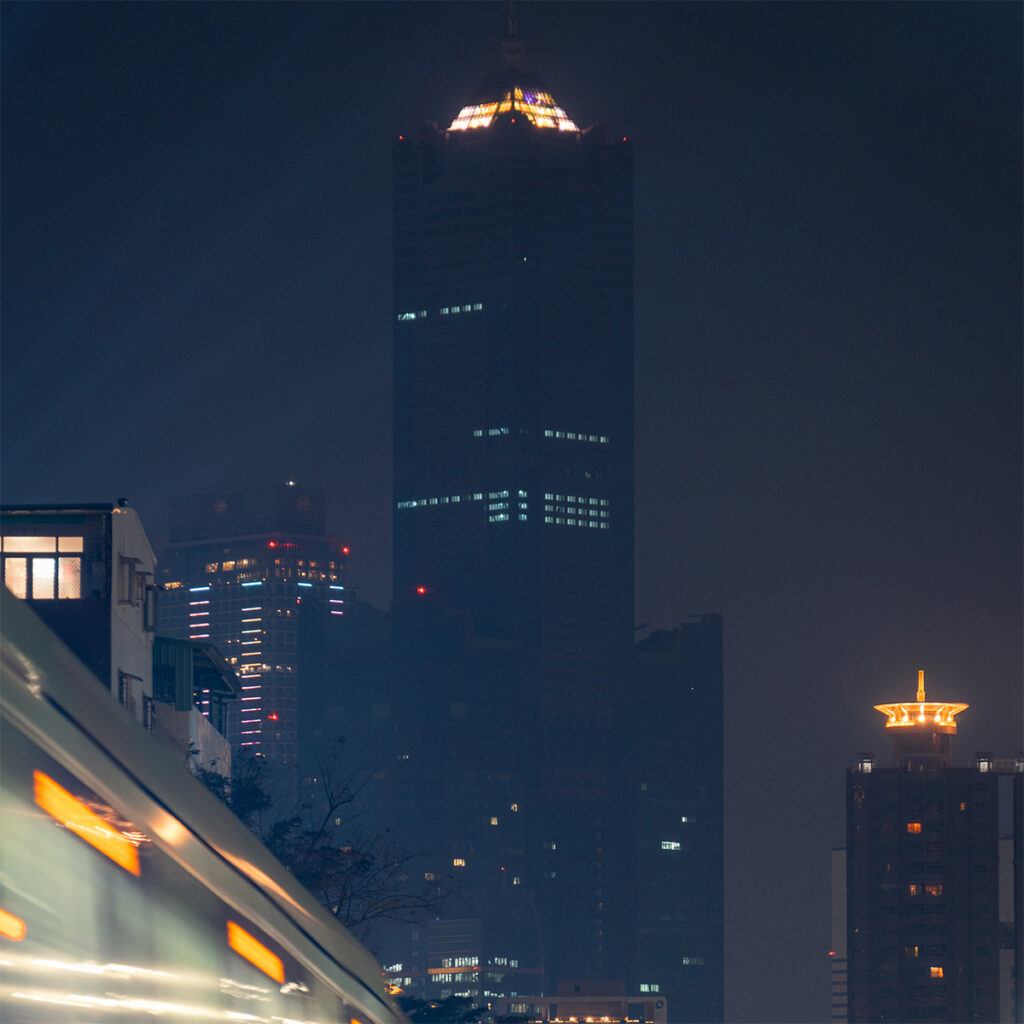
How To Get Around Kaohsiung City (高雄市)
For travelers coming from Taipei or other major cities via High Speed Rail (HSR), get off at Zuoying Station. From there, the KMRT system connects you directly to where you need to go. The journey is straightforward and well-marked with English signage. Efficient transportation is key to maximizing your time at each Kaohsiung Taiwan tourist spot during your visit.
In addition to the MRT system, there’s also the light rail (LRT) highlighted in green that goes around the city center. The Light Rail is your gateway to many of Kaohsiung’s attractions, connecting you to places like the Great Harbor Bridge, Pier-2 Art District, and Love River Bay.
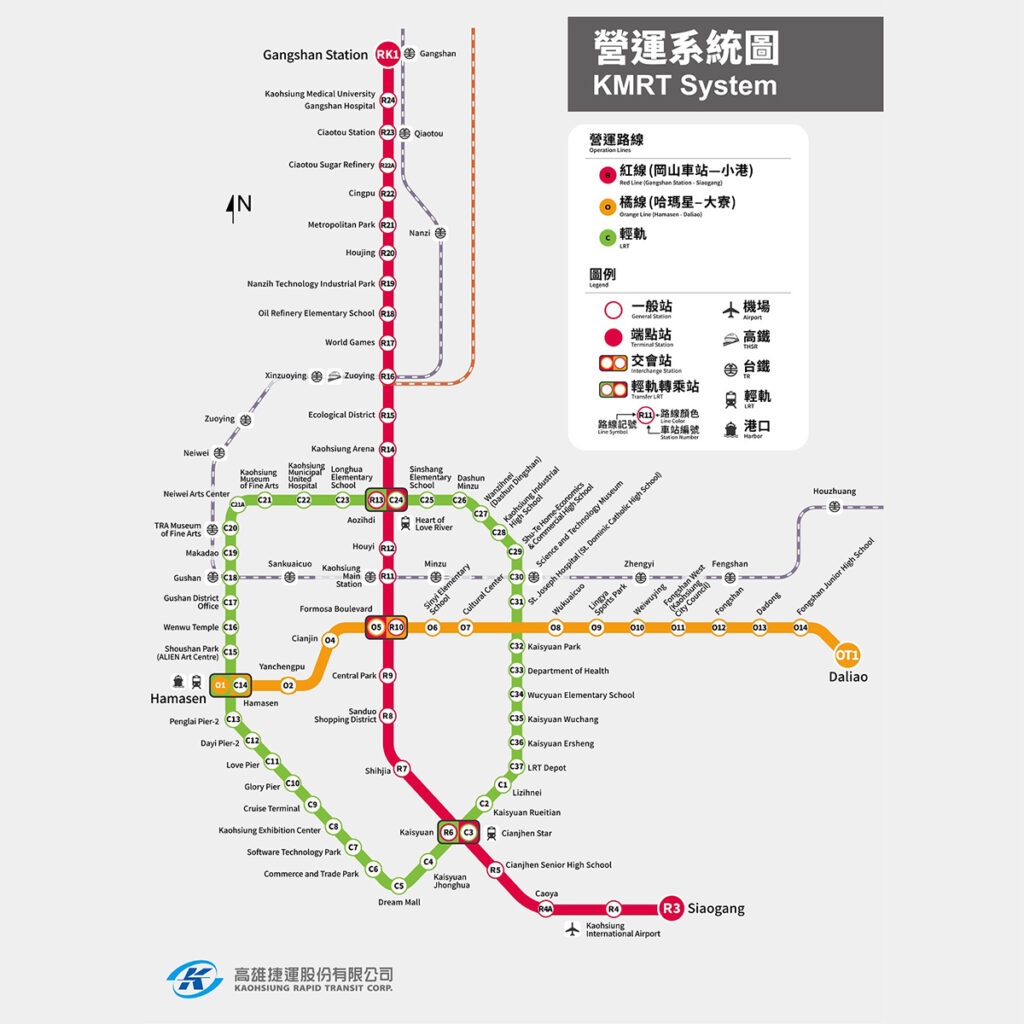
Where to Stay in Kaohsiung
Only a block away from one of Kaohsiung’s most notable landmarks, I booked my most recent stay at TAI Urban Resort (承億酒店). The reason? It’s Taiwan’s only high-altitude transparent infinity pool and has front-row views of 85 Sky Tower! The location is convenient for accessing popular Kaohsiung Taiwan tourist spots within minutes. For further interest, I wrote a dedicated comprehensive page reviewing my stay at TAI Urban Resort.
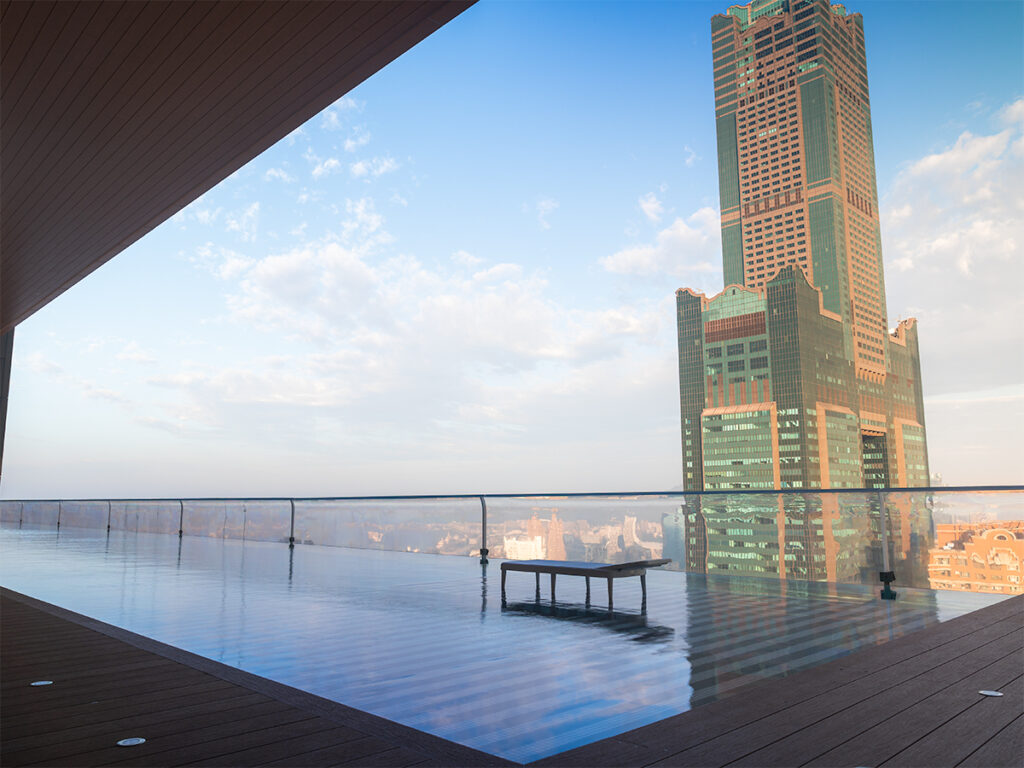
Things To Do in Kaohsiung (高雄市)
Lotus Pond (蓮池潭)
Right on your way after arriving from the High Speed Rail station, you’ll find Lotus Pond, a stunning artificial lake that’s been captivating visitors since 1951. What makes this place special are the incredible temples that surround it! As one of the most photographed Kaohsiung Taiwan tourist spots, the pond features numerous structures and temples, though I myself didn’t do a full loop.
Dragon and Tiger Pagodas (龍虎塔)
The most photographed spot has to be the Dragon and Tiger Pagodas. These seven-story towers sitting right on the lake are more than just pretty buildings. Be sure to enter through the dragon’s mouth and exit through the tiger’s for good fortune. Inside, you’ll find beautiful artwork telling stories of Chinese tradition and mythology.
Also, just across from these pagodas stands the historic Chiji Temple (慈濟宮). This place is actually what ordered the construction of the pagodas back in 1974.
Spring and Autumn Pavilions (春秋閣)
A short walk away is the Spring and Autumn Pavilions. These yellow and green octagonal structures connect by a winding bridge, with a remarkable statue of Guanyin riding a dragon between them. Legend has it the Goddess herself appeared in the clouds and requested builders to construct this statue.
Pei Chi Pavilion (北極亭)
Further down stands the impressive Pei Chi Pavilion, housing some of Asia’s tallest water statues, featuring a massive 38.5-meter sword in the hand of Xuan Tian Shang Ti, the ‘God of War’.
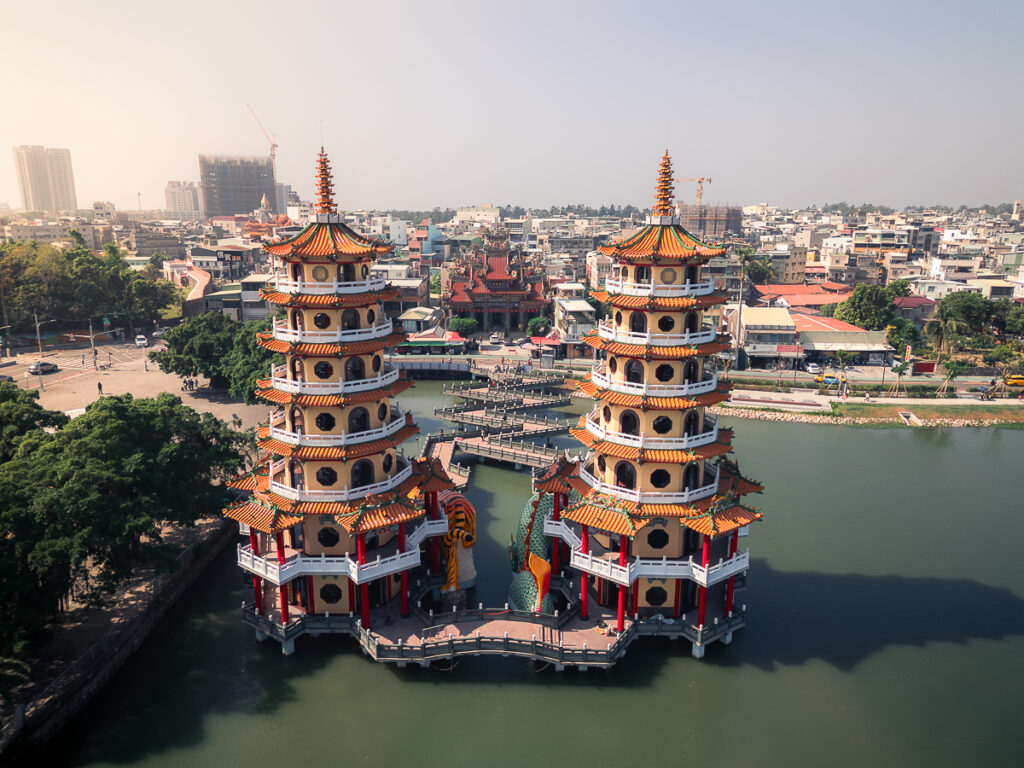
85 Sky Tower (高雄85大樓)
As you make your way deeper into the city center, you can’t miss 85 Sky Tower, formerly known as the T & C Tower or Tuntex Sky Tower, which stands as a defining feature of Kaohsiung’s skyline. Built between 1994 and 1997 by the same architectural firm behind Taipei 101, this 85-story skyscraper reaches a height of 347.5 meters, with an antenna extending its pinnacle to 378 meters. Its design cleverly incorporates the Chinese character ‘gāo’ 高 (meaning tall), also part of the city’s name.
While it remains the second tallest building in Taiwan after Taipei 101, the tower’s glory has faded in recent years. The once-bustling shopping mall has closed, offices have emptied, and even the observatory deck, which offered spectacular city views, now stands vacant. I witnessed this decline firsthand during my 2018 visit, though I was able to capture progress shots of the Port Cruise Terminal construction, part of the Asia New Bay Area project.
Despite its largely abandoned state, the tower’s prime location near the harbor continues to draw tourists, making it an enduring landmark in Kaohsiung’s urban landscape. As mentioned above, I was able to see it from the hotel I stayed at on my most recent trip when I stayed at TAI Urban Resort.

Totoro Tunnel
For a “magical experience”, hop on the Kaohsiung Light Rail and head to what locals affectionately call the ‘Totoro Tunnel.’ Between stations C21A and C21, you’ll discover a natural archway formed by magnificent Madagascar almond trees that curve over the tracks.
If you’re a Studio Ghibli fan, you’ll immediately recognize why it earned its nickname. The tunnel perfectly captures the whimsical atmosphere of the Catbus scene from ‘My Neighbor Totoro.’ Honestly, unless you have a photographer’s eye you might find this underwhelming, but part of our job is finding the beauty in everything. Just remember to keep a safe distance from the tracks and mind the warning signals when taking photos of this Instagram-worthy location. The surrounding area is also an urban oasis that’s open and perfect for picnics or just hanging out.
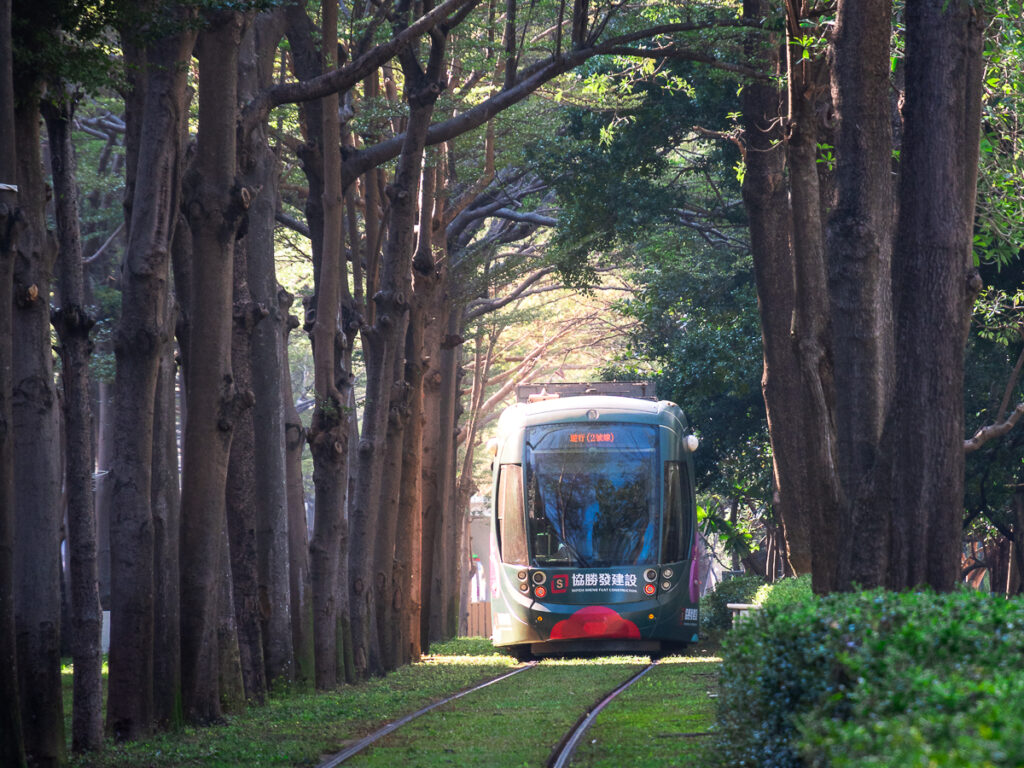
Love River (爱河)
Think of Love River as Kaohsiung’s version of the River Thames, a 12-kilometer waterway that winds through the city center and serves as its cultural backbone. What’s remarkable is how this river transformed from an industrial waterway into one of the city’s most beloved attractions.
Today, the riverbank comes alive at night with outdoor cafés, live music, and a night market. During special occasions like the Lantern Festival, the river becomes even more magical as it lights up with colorful displays and festivities. This vibrant area has become a must-visit Kaohsiung Taiwan tourist spot for evening entertainment.
Dome of Light (光之穹頂)
You can’t leave Kaohsiung without visiting what many consider one of the most beautiful metro stations in the world: Formosa Boulevard Station (美麗島車站). The station’s crown jewel is the breathtaking ‘Dome of Light,’ an awe-inspiring glass art installation that spans 30 meters in diameter.
Created by Italian artist Narcissus Quagliata, this masterpiece took four years to complete and uses over 4,500 glass panels to tell the story of human life through four themes: water, earth, light, and fire. However, there’s more to this station than just its stunning aesthetics. It takes its name from the historic “Formosa Incident” (美麗島件事) of 1979, a pivotal pro-democracy demonstration that helped shape Taiwan’s journey to democracy. The dome’s message of love and tolerance serves as a beautiful tribute to those who fought for the civil liberties that Taiwan enjoys today.
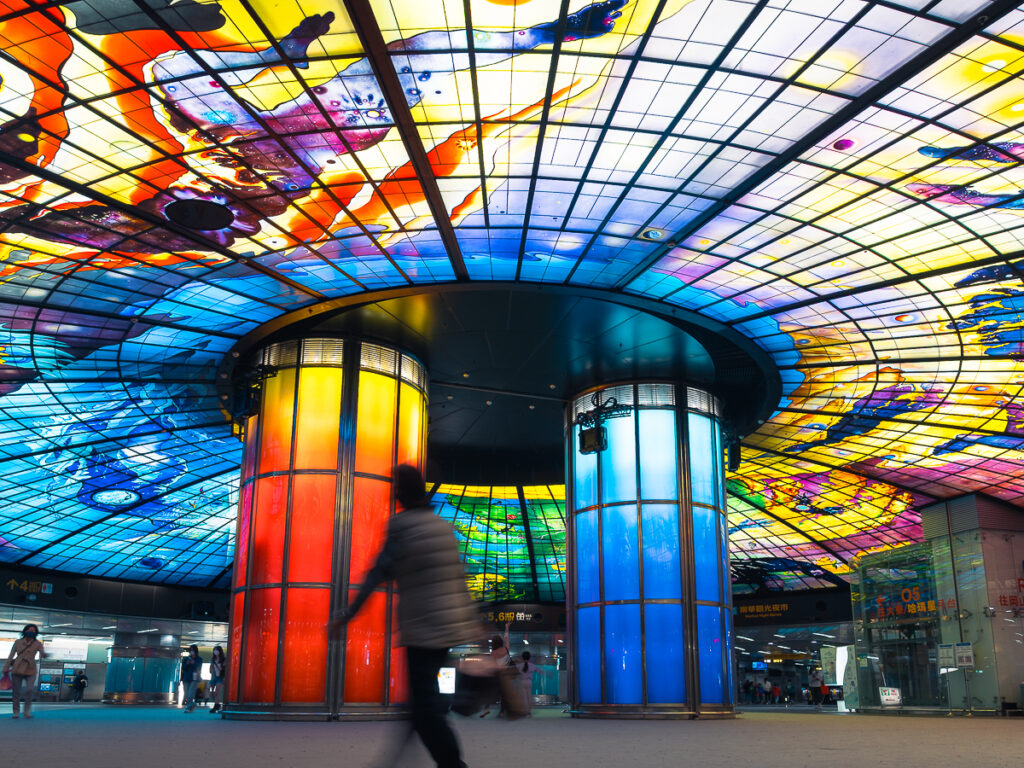
Must Eats in Kaohsiung
Nan Feng Lu Rou Fan (南豐魯肉飯)
If you want to eat where the locals eat, head straight to Nan Feng Lu Rou Fan, a hidden gem that came highly recommended by my driver during my time in Kaohsiung. This unassuming spot serves what might be the best braised pork rice (魯肉飯) in the city, and I didn’t spot a single tourist during my visit. Just locals enjoying their favorite comfort food.
I try to stay away from pork for ethical reasons, but when traveling, I make exceptions for dishes that are central to the local culture. In Taiwan, pork is at the heart of many dishes. When locals recommend a particular spot, I believe in experiencing the authentic cuisine.
The signature dish here, Lu Rou Fan, features a huge chunk of fatty pork belly that chefs slow-cook to perfection in a savory soy sauce mixture, serving it atop a bed of steaming white rice. What makes Nan Feng’s version special is the extra richness and depth of flavor in their braising sauce. It’s notably more savory than versions you’ll find elsewhere, with the perfect ratio of fat to lean meat that creates a melt-in-your-mouth experience.
Beyond the braised pork rice, their menu offers other affordable Taiwanese classics like Lion’s Head meatballs, fish belly rice, and various soups, but the Lu Rou Fan is what draws the crowds. At just 60 TWD (about $2 USD), it’s not only delicious but incredibly budget-friendly.

Photo Spots in Kaoshiung
Kaohsiung offers countless photogenic locations that showcase the city’s unique blend of natural beauty, modern architecture, and cultural heritage. The most Instagram-worthy Kaohsiung Taiwan tourist spots for photography enthusiasts include both modern and traditional landmarks. For a full guide to the city’s most Instagram-worthy locations, check out my Kaohsiung’s Most Photogenic Spots post, but here’s a quick rundown of must-capture locations:
- Kaohsiung’s Port Cruise Terminal – Stunning modern architecture with sweeping harbor views
- Kaohsiung Music Center – Futuristic design that looks particularly dramatic at sunset
- Dome of Light (光之穹頂) – KMRT Formosa Blvd Station’s kaleidoscopic ceiling
- Lotus Pond – Ancient pagodas reflecting in still waters
- Dragon and Tiger Pagodas – Iconic structures best photographed during golden hour
- Pier-2 Art District – Colorful street art and converted warehouses
- Love River – Beautiful night shots with city lights reflecting on the water
- 85 Sky Tower – Kaohsiung’s iconic skyscraper that dominates the skyline
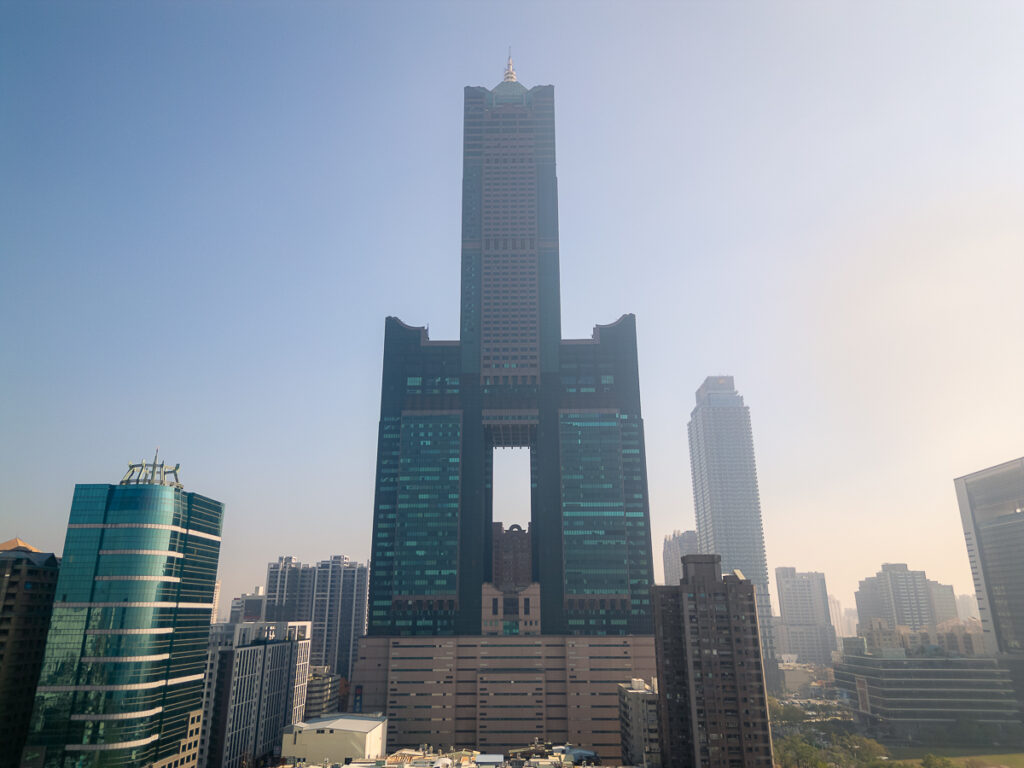
Day Trips from Kaohsiung City
I haven’t even scratched the surface of all you can do in Kaohsiung, but there are also a lot of day trips in the surrounding area. While the city itself offers many amazing Kaohsiung Taiwan tourist spots, exploring the outskirts provides a fuller experience of southern Taiwan.
Tianliao Moon World (田寮月世界)
Just outside Kaohsiung lies an otherworldly landscape that truly lives up to its name: Tianliao Moon World. Centuries of rain erosion created this badland formation that resembles the lunar surface with its barren, craggy terrain. The area is home to over 20 mud volcanoes.
For the full experience, start at the Mudstone Geography Center to understand how this unique landscape formed before venturing into this desolate yet strangely beautiful terrain.
Address: No. 36, Yueqiu Rd., Tianliao Dist., Kaohsiung City
Fo Guang Shan Buddha Museum (佛光山佛陀紀念館)
Home to Taiwan’s largest Buddha statue at an impressive 40 feet tall, Fo Guang Shan is a testament to modern Buddhist architecture. While the 90-minute drive from Kaohsiung makes it a bit remote, those interested in Buddhism or Asian architecture enthusiasts will appreciate its serene beauty and cultural significance.
This place seems to have gained popularity on social media, and surprisingly, commercial vendors like Starbucks have been added to the premises. That being said, restless kids might not find this an ideal spot.
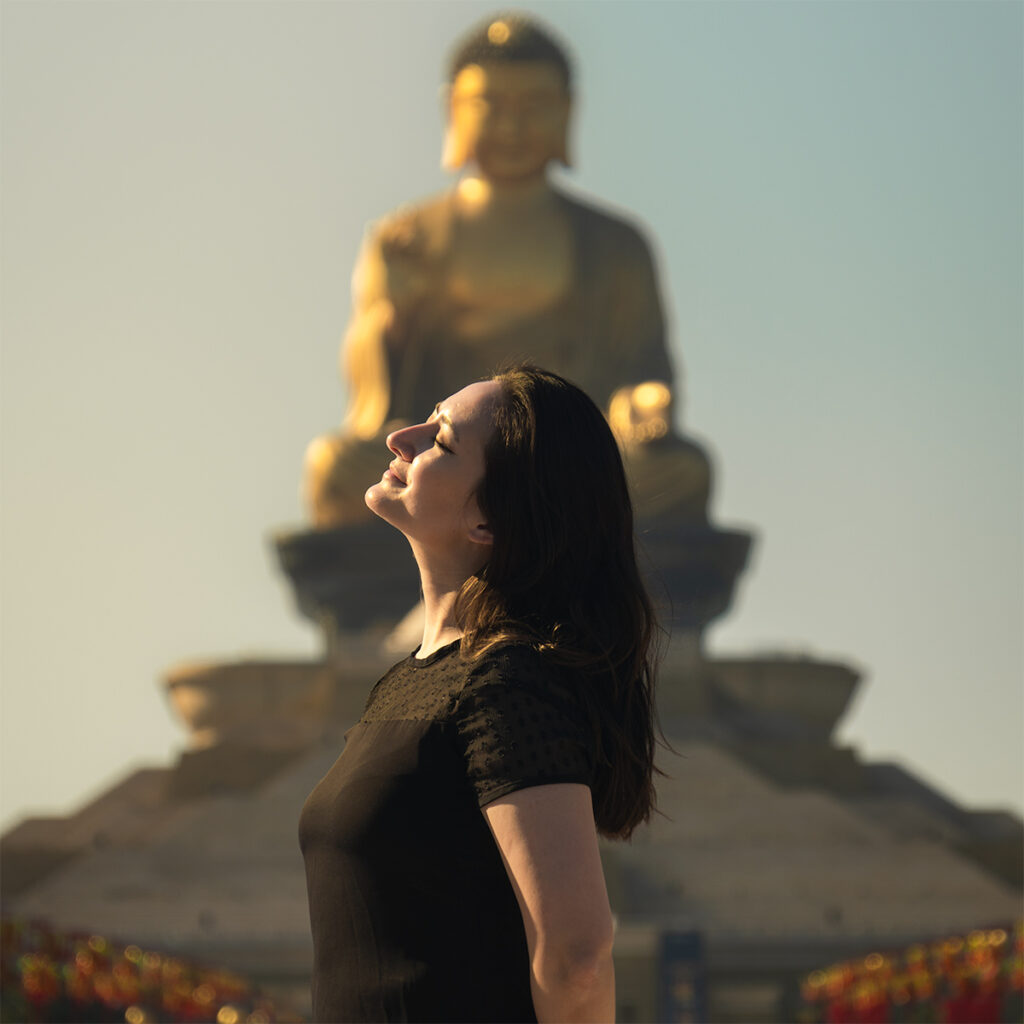
Meinong Hakka Cultural Center (美濃文創中心)
Dive into Taiwan’s rich cultural diversity at the Meinong Hakka Museum, which preserves the fascinating history of Hakka migration from mainland China. In Taiwanese history, there were five “great migrations” of Hakka people from China to Taiwan between the Yongjia Period of the Eastern Jin Dynasty (317-879 AD) to the Qianjia Period during the Qing Dynasty post-1867.
My family is part of the last Hakka migration and settled in Hsinchu, which is a large Hakka stronghold. I grew up hearing my family code switch between Mandarin Chinese and Hakka, but unfortunately never picked it up myself because Hakka is hard AF. I don’t think it’s learned through a formal curriculum either. Through interactive exhibitions, you’ll learn about the five great Hakka migrations to Taiwan spanning over centuries.
Nearby, is Meinong Lake, Kaohsiung’s second-largest artificial lake, which offers beautiful sunset views and is a perfect subject for landscape photography. Between October and March, large numbers of migratory birds come here to winter, making this an excellent place for bird-watching. When I went, maintenance crews had dried up the lake for maintenance, so I definitely want to come back here to capture some sunset shots!
Address: No.49-3, Minzu Rd., Meinong Dist., Kaohsiung City
Maolin National Scenic Area (茂林國家風景區)
Lastly, and perhaps Taiwan’s best-kept secret, Maolin National Scenic Area is why I returned to Kaohsiung. For those of you who don’t know, one of Taiwan’s nicknames is the ‘Kingdom of Butterflies’ because it hosts 55 endemic species, and the island contains the world’s second-largest butterfly sanctuary. I highly recommend having your own vehicle or hiring a driver if you want to go here.
Maolin Visitor Center Address: No. 7-7, Maolin Ln., Maolin Dist., Kaohsiung City 851001
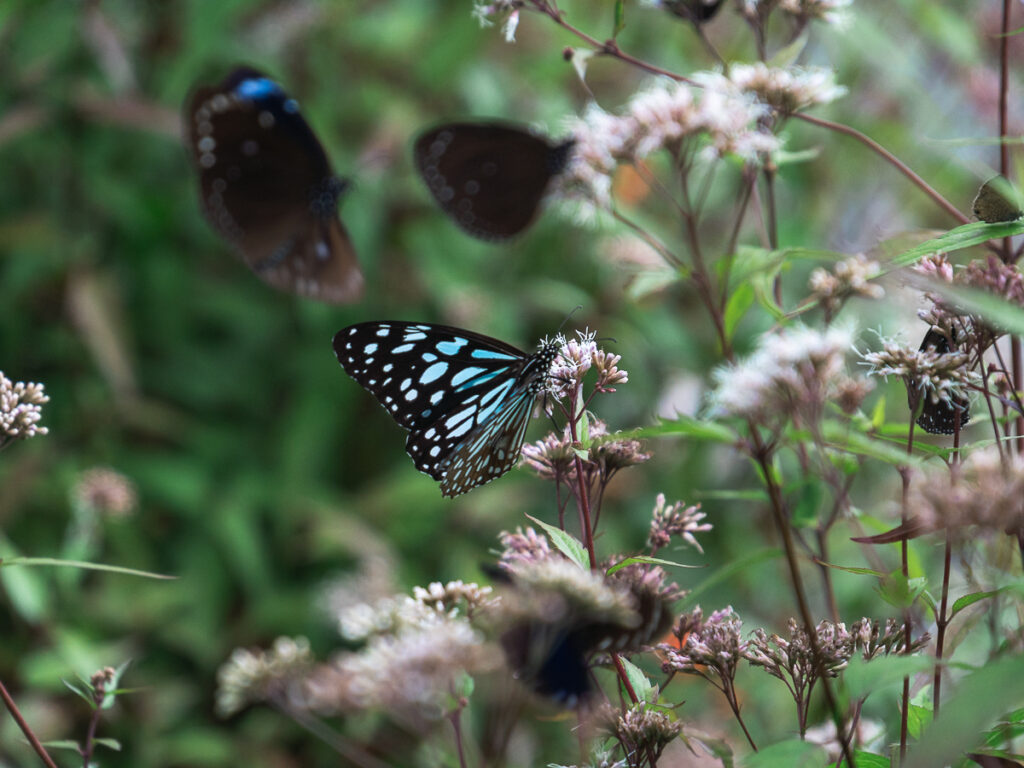
Final Thoughts on Kaohsiung
Kaohsiung represents the perfect balance of Taiwan’s traditional charm and forward-thinking development. While Taipei often steals the spotlight, the second-largest city offers a more relaxed pace, warmer weather, and unique attractions that deserve at least 3-4 days of exploration.
What struck me most about Kaohsiung was how the city has transformed its industrial past into cultural spaces while preserving its heritage. Whether you’re looking for popular Kaohsiung Taiwan tourist spots or off-the-beaten-path discoveries, this city delivers an authentic Taiwanese experience.
Have you visited Kaohsiung? Share your favorite spots or questions in the comments below!
Watch on YouTube
To keep up to date with everything I share, follow along on my social media and read up on what camera gear I use when I travel.
Leave a Reply Cancel reply
© Erin Donahue Creative LLC, All Rights Reserved
Terms of Service & Privacy Policy